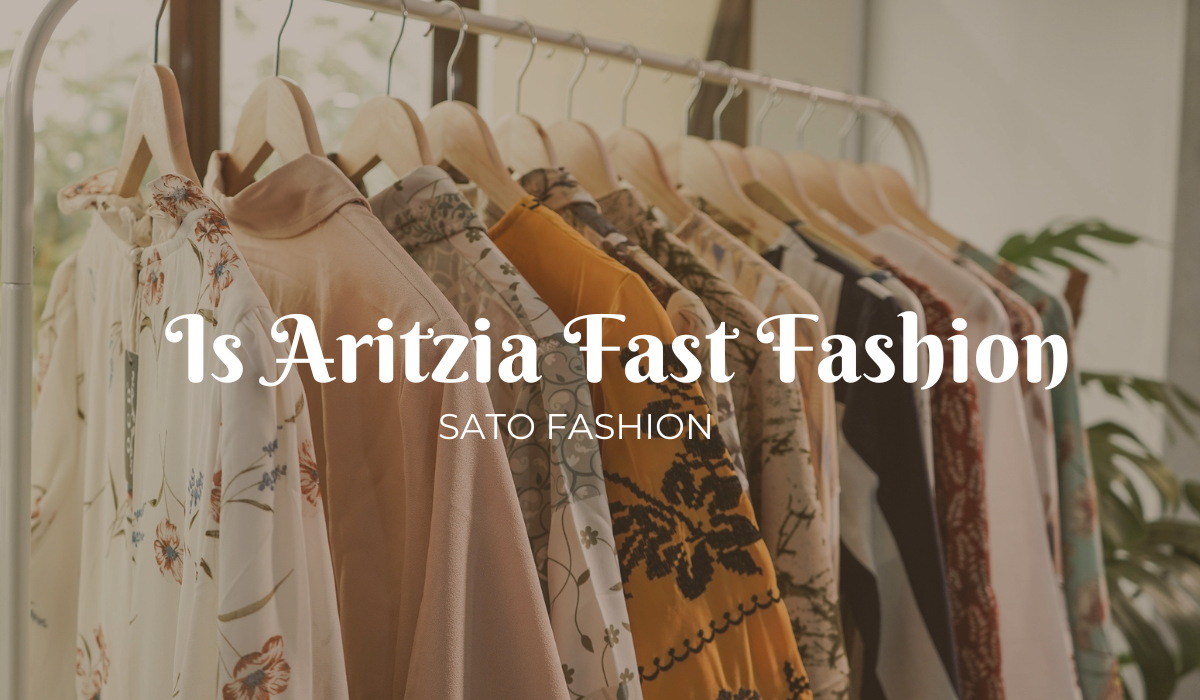When it comes to the world of fashion, few debates stir as much curiosity as whether a brand fits into the fast fashion category. Among those often questioned is Aritzia, a Canadian retailer beloved for its clean aesthetics, elevated basics, and effortlessly chic styles. On the surface, Aritzia appears to stand apart from budget-driven fast fashion retailers like Zara or H&M. Its boutiques are designed to feel curated and luxurious, its price tags are noticeably higher, and its branding leans into the concept of “everyday luxury.” But once you look beyond appearances, the question remains: is Aritzia fast fashion?
This article unpacks Aritzia’s approach to design, production, and sustainability to examine whether the brand is genuinely offering a slow-fashion alternative or if it’s simply fast fashion wrapped in premium packaging.
Understanding Fast Fashion
Before we analyze Aritzia, it’s important to clarify what fast fashion means. The term describes a business model where:
- Clothing is produced rapidly to keep up with ever-changing trends.
- Garments are sold at relatively low prices to encourage frequent purchases.
- Companies prioritize speed and volume over durability and sustainability.
The consequences of this model are well-documented: massive textile waste, questionable labor practices, and environmental degradation. Brands like Shein, Zara, and H&M epitomize fast fashion because they churn out new styles weekly, producing clothing at breakneck speed with little regard for long-term quality.
Aritzia’s Brand Identity
Founded in Vancouver in 1984, Aritzia has cultivated an image that feels a step above mass-market retailers. The company owns multiple in-house labels, including:
- Wilfred (romantic, feminine styles)
- Babaton (tailored, minimalist office wear)
- TNA (athleisure and casual streetwear)
- Sunday Best (youthful, trendy designs)
These labels allow Aritzia to appeal to different style preferences while maintaining a cohesive brand identity. Instead of a chaotic assortment, its collections often appear sleek and cohesive, giving off the impression of intentional design.
But branding can be deceptive. While the stores feel curated and the fabrics appear higher quality, the core business model still revolves around trend responsiveness and large production runs—both markers of fast fashion.
Does Aritzia Follow Fast Fashion Practices?
1. Frequency of New Collections
Fast fashion thrives on constant novelty. Aritzia releases new collections multiple times per year, often aligned with seasonal changes but also dropping new arrivals throughout the year. This ensures a steady flow of fresh styles that keep customers coming back. While not as extreme as Zara’s weekly drops, Aritzia’s release schedule is more frequent than traditional slow-fashion brands.
2. Trend Responsiveness
Aritzia has built its reputation on offering clothes that feel timeless yet modern. However, a closer look reveals that many designs are trend-driven. For example, when oversized blazers, slip dresses, or puffer jackets dominate mainstream fashion, Aritzia is quick to roll out multiple versions. This reactive approach mirrors the fast fashion model.
3. Production Volume
Although positioned as premium, Aritzia produces clothing in large volumes. Its popularity means items often sell out quickly, only to be restocked in bulk. This high production scale contributes to the same overconsumption cycle that fuels fast fashion.
4. Transparency Issues
One hallmark of ethical and sustainable fashion is transparency—brands openly disclose where their clothes are made, who makes them, and under what conditions. Aritzia has published limited information about its supply chain and working conditions. While the company has released corporate social responsibility statements, they lack detail compared to truly sustainable brands.
5. Price Point vs. Quality
At first glance, Aritzia’s higher price point suggests it is not fast fashion. A blouse from Aritzia may cost $120, compared to $29 at Zara. However, price alone does not determine sustainability. Many customers report that Aritzia’s garments, while stylish, do not always hold up long-term, raising questions about whether buyers are truly paying for quality or simply for branding.
Aritzia vs. Fast Fashion Giants
To place Aritzia in context, it helps to compare it with both ultra-fast fashion and genuine slow-fashion brands:
- Compared to Zara/H&M/Shein: Aritzia’s garments generally use better fabrics, and the brand avoids bargain-basement pricing. However, its frequent releases and large-scale production keep it closer to fast fashion than slow fashion.
- Compared to Reformation/Eileen Fisher/Everlane: Aritzia falls short in transparency, sustainability initiatives, and long-term garment durability. These ethical brands emphasize eco-friendly fabrics, recycling programs, and clear supply chain disclosures.
This places Aritzia in a gray zone—not as exploitative as ultra-fast fashion, but not meeting the standards of sustainable, ethical fashion either.
The Sustainability Question
Aritzia has made some gestures toward sustainability, such as introducing recycled fabrics in certain pieces and reducing packaging waste. However, critics argue these steps amount to greenwashing—using limited initiatives to create the appearance of eco-consciousness without fully committing to systemic change.
Key missing elements include:
- Full supply chain transparency
- Living wage guarantees for garment workers
- A large-scale shift toward sustainable fabrics
- Circular fashion initiatives like garment recycling or resale
Without these, Aritzia’s sustainability claims remain surface-level.
Should Conscious Consumers Buy Aritzia?
For fashion lovers trying to shop mindfully, Aritzia presents a dilemma. On one hand, its designs are stylish, versatile, and often more durable than ultra-cheap fast fashion. On the other, its business model still aligns with high-volume, trend-driven production.
A middle-ground approach is to buy Aritzia second-hand—through platforms like Poshmark, Depop, or ThredUp. This allows consumers to enjoy the brand’s aesthetic without directly contributing to new production. For those seeking to align fully with slow fashion values, however, brands like Reformation, ABLE, or Eileen Fisher remain stronger alternatives.
Conclusion
So, is Aritzia fast fashion? The answer is complex. While the brand markets itself as “everyday luxury” and positions its clothing above the likes of Zara and H&M, its frequent collections, trend-driven designs, high production volumes, and limited transparency suggest it does follow many fast fashion practices.
Aritzia occupies a middle tier—not the cheapest or fastest, but still driven by the same cycles of overproduction and trend responsiveness. For mindful consumers, understanding this distinction is key. Fashion is never just about style; it’s also about the systems, workers, and environmental impacts behind each garment.
FAQs About Aritzia and Fast Fashion
1. What makes a brand fast fashion?
Fast fashion brands produce clothing quickly and cheaply to follow the latest trends. This usually involves high-volume production, low-quality garments, and limited transparency about labor and environmental practices.
2. Is Aritzia considered luxury fashion?
Not exactly. Aritzia markets itself as “everyday luxury,” but it is more accessible than true luxury brands like Prada or Chanel. Its pricing and production practices align more closely with premium fast fashion.
3. Does Aritzia use sustainable fabrics?
Some collections include recycled materials or eco-fabrics, but this is not the standard across the brand. True sustainable fashion requires consistent use of eco-friendly materials and ethical labor practices.
4. Where does Aritzia manufacture its clothes?
Aritzia produces garments in multiple countries, but the company has not provided full transparency about specific factories, wages, or working conditions.
5. Is buying second-hand Aritzia more sustainable?
Yes. Purchasing Aritzia pieces second-hand reduces demand for new production and extends the life of garments, making it a more eco-friendly option.

